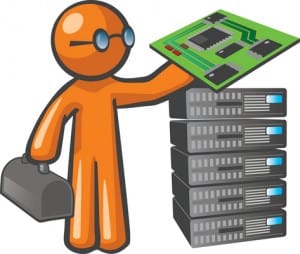It’s nice when we own something and it’s completely paid for. Think of a car or large purchase you financed. Once it’s paid off, you feel great: money is freed up and it’s yours.
However, often in these situations, you’ve poured a few years of use into it by the time it’s paid off. When something finally breaks, the warranty has probably already expired. Then, you’re forced to decide if you are going to put money into this old car or appliance or if it’s time to upgrade instead.
When you don’t upgrade your car or appliances, there may be some small risks in terms of missing out on improved safety or the newest features, but the biggest risk will be monetary.
Businesses sticking it out with old software isn’t much different, but the consequences can be much worse.
Software is sometimes pricey, and often, the outdated software will still technically work. We get used to the layout and processes, and it becomes easy to use. After five or ten years, you know where all the buttons are. Your documentation for employees might be based this particular version, and you may not have the time to overhaul your reference materials.
The issue with this is, while you’re happy to run the 2015 version of a software, that software company has released a new version in 2016, 2017, 2018, etc. Usually, they will still update old versions for a short time after new ones come out.
Once these software companies stop providing updates, however, any known vulnerabilities will remain unpatched and any new vulnerabilities that are discovered will not be addressed.
If you know the software inside and out, so do the hackers. It’s far easier for them to utilize a known flaw than attempt to break a new and unknown software. The longer you wait to update, the more likely it is that your data or network will be compromised.
Yes, paying for that new version of software is not something we want to do, but in the long run, it may save you a lot of money and headaches.
Software as a Service (SaaS) also makes this a little easier to deal with. Rather than paying a huge amount one time upfront, you can often subscribe and pay a smaller amount monthly or yearly that allows you to install new versions as they come out. This usually includes security patches and updates too.
Another consequence of holding out on updating old software is the possibility that your PC may need to be suddenly replaced or updated. If it crashes or becomes too slow to reliably use, you can lose that program. A lot of software is provided via download, and it may not be available for download once it’s time for a new PC.
In addition, if you bought something that was written for Windows 7 and have not upgraded in the past six years, it may not be possible to use that program if you are stuck five versions behind. Also, since you paid the vendor long ago, they often won’t help you reinstall the old software; instead, they’ll require you to buy a current version before assisting.
We understand that staying with what you’re familiar with is easy. Since you own the software, it carries a financial benefit as well. However, the short-term financial gains risk data loss and essential parts of your business becoming unrecoverable in a disaster. Look at software updates like insurance: you are paying to keep yourself as protected as possible and working to minimize any potential risk.


